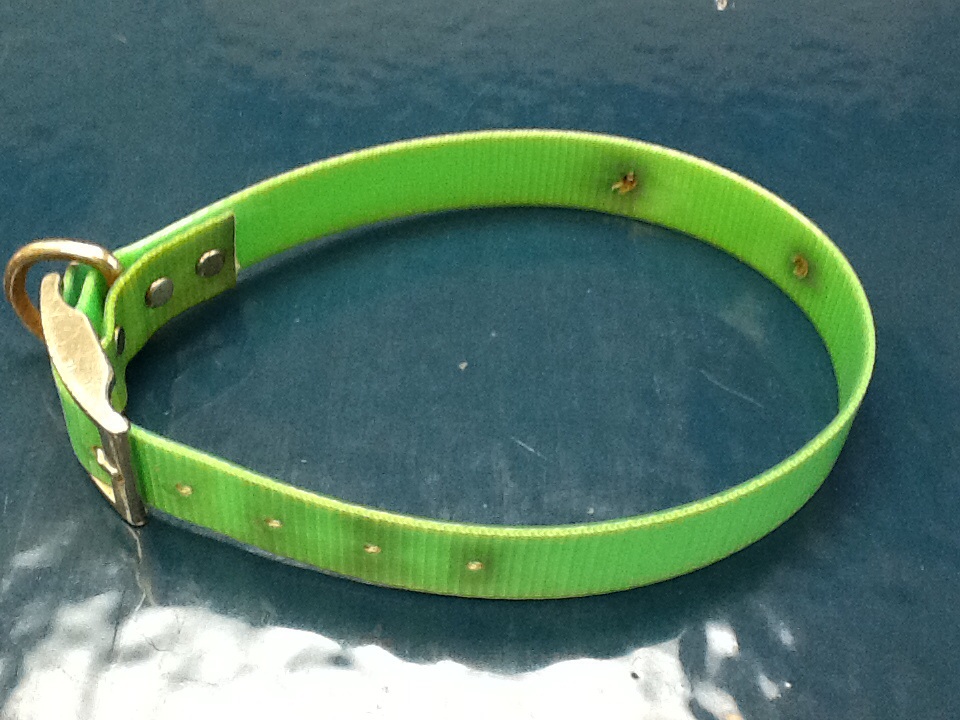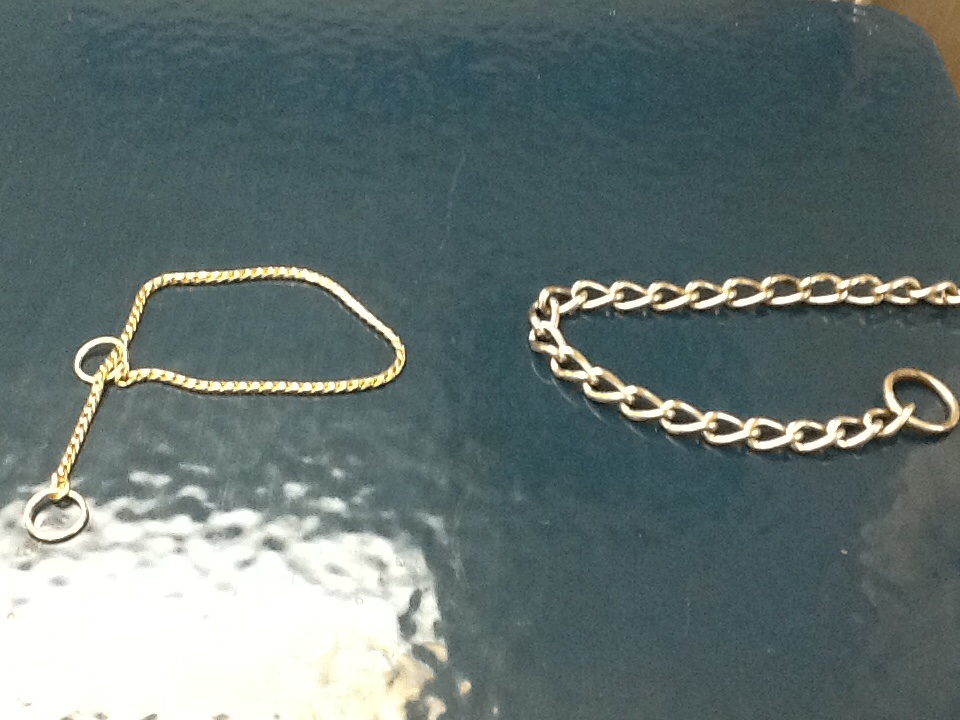Collars- Get It Right!
We
frequently see quite a few incorrectly fitted collars daily here at Morehead
Animal Hospital. A collar that hangs
like a necklace on your dog is pretty useless because they can back right out
of it the minute they do not want to follow whoever is holding the leash. To
correctly fit, a collar should have two human fingers worth of give for
comfort. With certain breeds and their particular anatomy, you may not be able
to use a slip collar that goes over their head because the neck and head are
very close to being the same size with an example being greyhound varieties.
Dogs with
short, smooth coats can use flat buckle collars (preferably the type that can
be laundered or cleaned with leather soap) whereas long-haired dogs would have
their coat flattened by such a collar. There are fur-saver collars and round
nylon or leather collars for these coated breeds that will not chew away or
flatten their beautiful coats.

Before you
purchase your dog a collar, measure his or her neck with a tape measure or tie a
piece of string around it and then measure that. When you do purchase the collar, ask if you
can exchange it if the fit is not right because just like humans and shoes, the
fit can vary from company to company.
Training
collars, also referred to as choke or slip collars, are only meant to be on
your dog while on a leash. They can be dangerous left on your dog unattended. I
knew someone whose English Mastiff had a chain slip collar on and while lying
in the sun on their sun deck had one of the rings slip between the deck
boards and get caught. The poor dog could not escape and panicked. The owners
found him dead of heat stroke right outside their back door.
The correct
way to put on a training collar is to have the collar in your hands and form
the letter P with it as you face your dog. That way when you place the collar
over his or her head, the active or live ring will work correctly when your dog is on your
left side when heeling. If you put it on the opposite way, it will not slip
back into position after a tug; it will stay in the choke position.

Chain
collars work best when small, smooth links are used. Large links will not slip
and release easily but tend to catch on each other. Training collars come in a
variety of nylon with some being braided for extra-strength for stronger or
larger dogs.
We would be happy to help adjust your collar on your pet if you have any questions.
